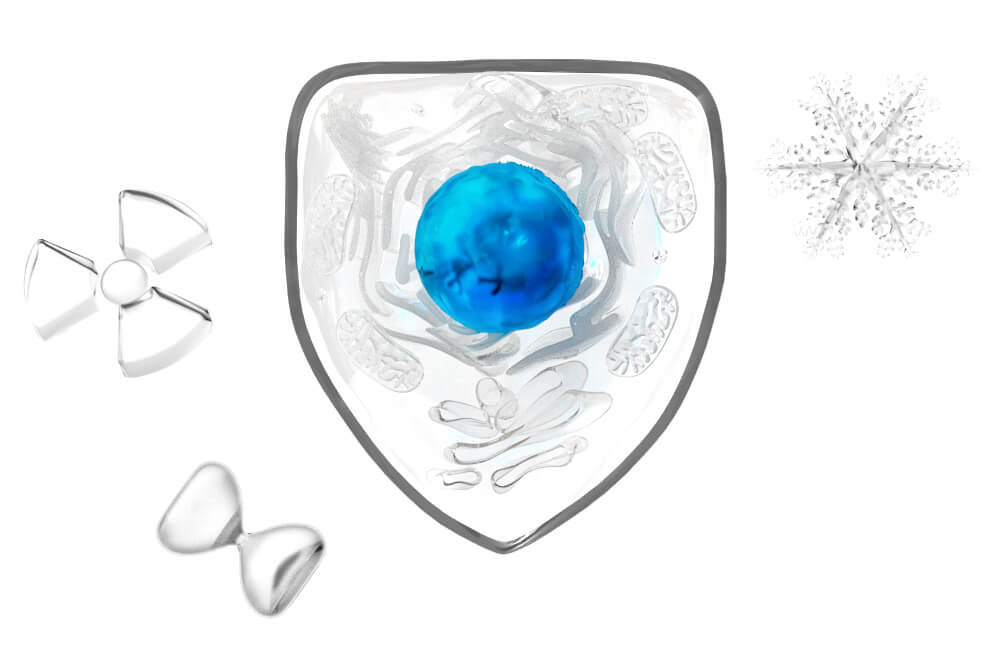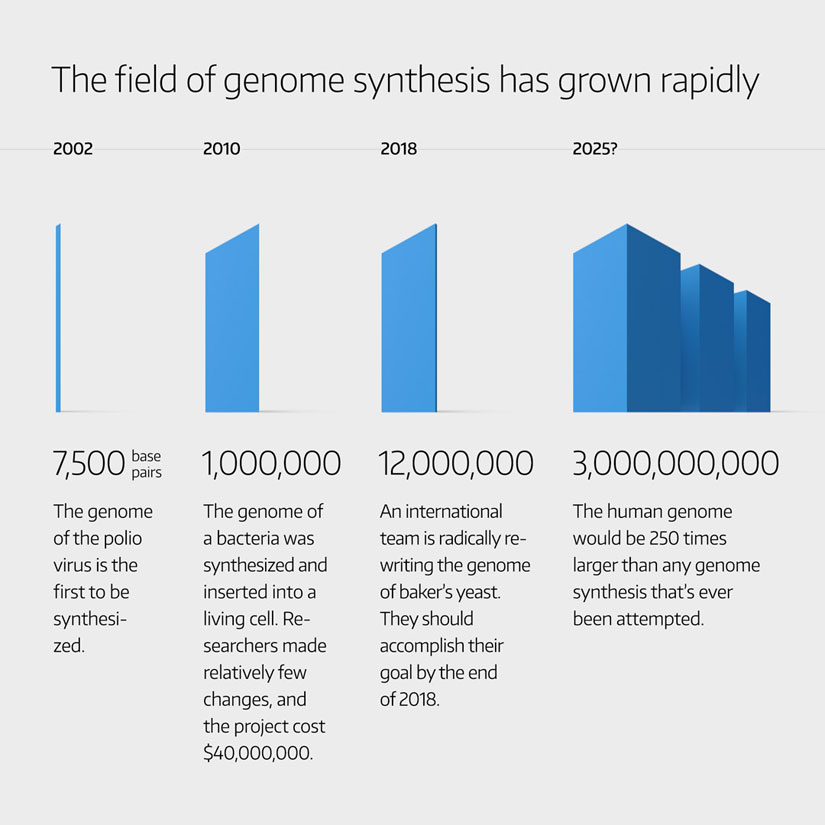
2nd May 2018 10-year project to make "ultra-safe cells" The Genome Project-Write has announced a new 10-year initiative to attempt to make human cells immune from viral infections. The project could also lead to cells resistant to aging, cancer, freezing and radiation.
The Center for Excellence in Engineering Biology (a non-profit organisation) and the leadership of Genome Project-write (GP-write) have announced their first grand-scale community-wide project – to develop "ultra-safe cells" that resist natural viruses and potentially aging, cancer, freezing and radiation. "The ultra-safe cell lines, made using technologies broadly applicable to plant, microbial and mammalian species, are aimed at complete resistance to all viruses and prions, and partial resistance to senescence and cancer, plus biocontainment," said Professor Jef Boeke from the Department of Biochemistry and Molecular Pharmacology at NYU Langone Medical Center, and one of four members of the GP-write Leadership Group. "Ultra-safe cells could have a major impact on human health," said another organiser, Professor George Church, from Harvard Medical School. For example, medicines are sometimes manufactured in specialised cellular factories. Viruses can contaminate the cells, in one case causing an estimated $1 billion in losses and cutting off patients from their medicine. Because of the risk, companies must undertake costly monitoring for viruses. "Ultra-safe cells could thus make pharmaceuticals safer, cheaper and more reliable," says Church. In support of these efforts, Harvard's Wyss Institute has partnered with French biotech company, Cellectis, giving Church and his team access to a proprietary gene editing technology called TALEN. This will enable changes to be inserted into DNA code with high specificity across an entire genome, including multiple changes at a time. "The overall GP-write project is focused on writing, editing and building large genomes," says Boeke. "We will generate a wealth of information connecting the sequence of nucleotide bases in DNA with their physiological properties and functional behaviours, enabling the development of safer, less costly and more effective therapeutics and a broad range of applications in other areas – such as energy, agriculture, healthcare, chemicals and bioremediation."
Creating virus-resistant cells is accomplished by a process called DNA recoding. Professor Church and colleagues had earlier demonstrated the feasibility of recoding in the bacteria E. coli, whereby 321 changes to the bacterial genome were able to confer viral resistance. The proposed recoding of a different species, such as a plant or mammalian genome, would be significantly more ambitious. "Recoding every protein in the human genome, for example, would require 400,000 changes," says Church. Specific redundant codons would have to be removed from all 20,000 human genes. The GP-write organisers hope to complete their work within 10 years. The project organisers point to potential benefits besides virus resistance. Recoding will require large-scale changes to the genome, creating opportunities for researchers to make the cells safer in other ways. Proposals include recoding genes to make the cell less likely to become cancerous, or enabling the cell to resist damage from aging, freezing and radiation. Another proposed benefit of the ultra-safe cell line, and GP-write more broadly, would be the commercial development of new genomics analysis, design, synthesis, assembly and testing technologies, with the goal of making them affordable and widely available to the scientific community. Recoding human cells will require major improvements in technology for synthesising and testing artificial genomes. In gene synthesis, DNA nucleotides are biochemically stitched together one at a time. The result is similar to natural DNA, but the process is currently very slow. By driving innovation and increasing demand, GP-write hopes to make this process faster and cheaper. After synthesis, the DNA can be assembled into genes or entire chromosomes and then tested in living cells. GP-write scientists will also work to improve the tools for genome assembly and testing – but in some cases, the technology does not exist yet. Later this year, the team hopes to complete a rewriting of the 12-million base-pair genome of baker's yeast (see the infographic below). The human genome, for comparison, has 3 billion base pairs in one set of chromosomes.
"We are looking forward to collaborating with the Wyss Institute and George Church's group on this very exciting Recode project using Cellectis' technology to recode the entire genome of human and other species cell lines," said Dr. André Choulika, CEO of Cellectis. "The precision, the performance and the flexibility of TALEN technology makes it the optimal gene editing platform for such a cutting-edge project." "This project and partnership between synthetic biologists at Wyss and Cellectis represents a major new application area for genome engineering that could open up entirely new paths for prevention of infectious disease, as well as for biomanufacturing, organ transplantation and regenerative medicine," said Wyss Institute Founding Director, Donald Ingber, PhD. "We believe in proceeding transparently and responsibly," says Nancy Kelley, lead executive at the Center of Excellence for Engineering Biology which coordinates GP-write. "Our efforts include supporting the formation and work of multi-institutional and interdisciplinary research teams working in a highly integrated fashion – responsive to and engaged with a broad public outreach. We have sought feedback from bioethicists, policy experts, journalists and the public."
Comments »
If you enjoyed this article, please consider sharing it:
|









